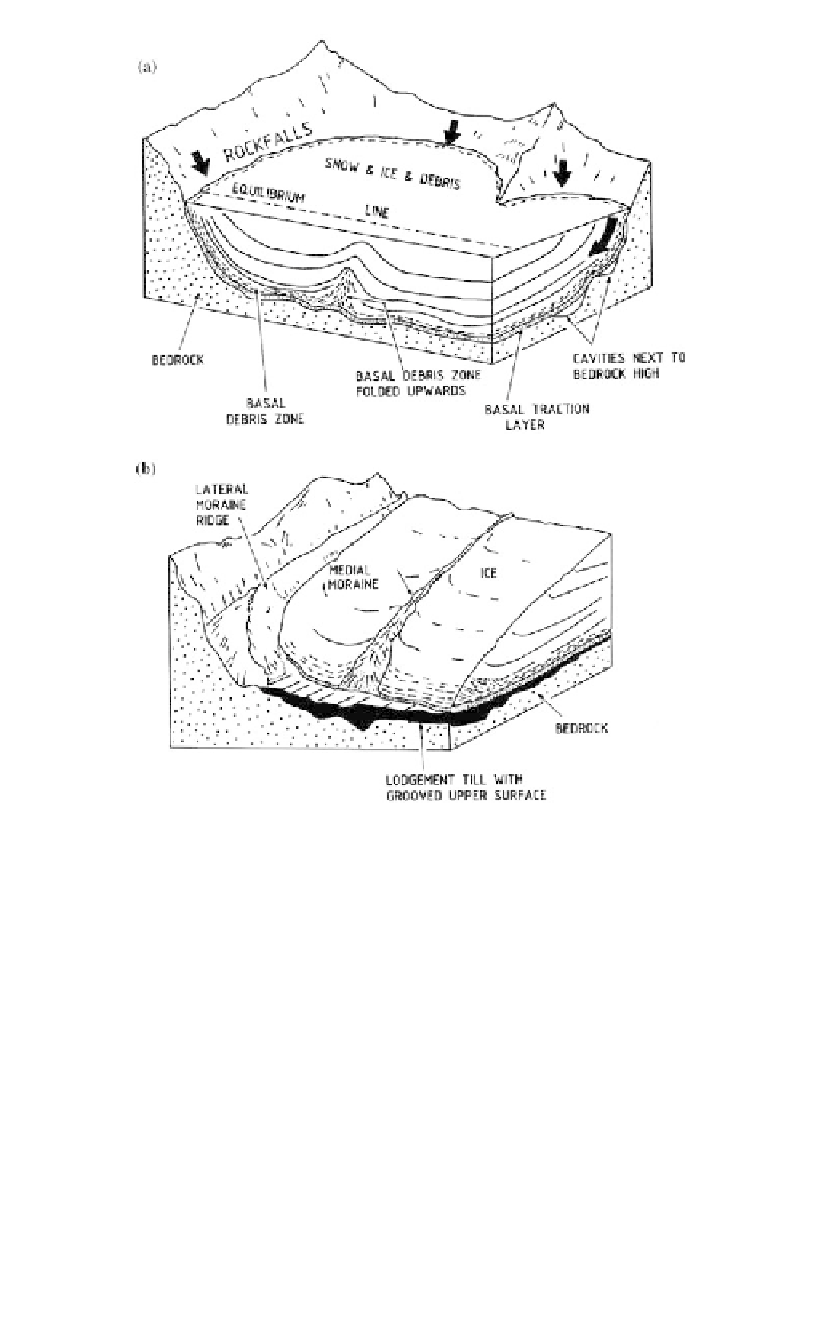Environmental Engineering Reference
In-Depth Information
Figure 3.46.
Debris transport by a valley glacier (Eyles 1985, by permission of Pergamon Press).
Where two glaciers converge to form a composite valley glacier, the debris zone may be
folded upwards by the compression generated along the glacier contacts and in the abla-
tion zone (Figure 3.46b) the debris may become exposed as a supraglacial medial
moraine.
Below the equilibrium line (Figure 3.46b) debris falling onto the glacier surface is not
ingested by the glacier because the winter snows do not survive the next summer. The
debris is transported along the glacier sides as ridges of supraglacial lateral moraine or as
supraglacial medial moraine after the convergence of two glaciers.
Figure 3.47
shows a typical situation at the snout where debris from the glacier surface
and within it are deposited as the ice melts.
Figures 3.48
and
3.49
show the development of a ridge of supraglacial lateral moraine
and soils associated with it during a single advance/retreat stage of a glacier.
During the advance (Figures 3.48a to c), debris which slides off the glacier surface forms
steeply dipping deposits (lateral moraine) analogous to talus or end-dumped fill. The mate-
rial, more precisely known as supraglacial morainic till, includes a wide range of particle
sizes. Outwash materials with initial near-horizontal bedding are deposited by streams in the
trough between the lateral moraine and the valley side. At depth the accumulated moraine

